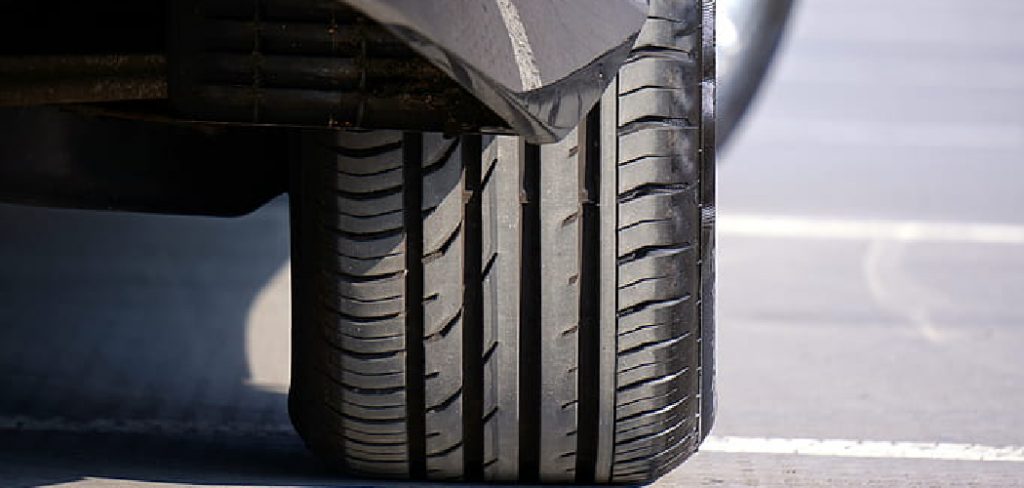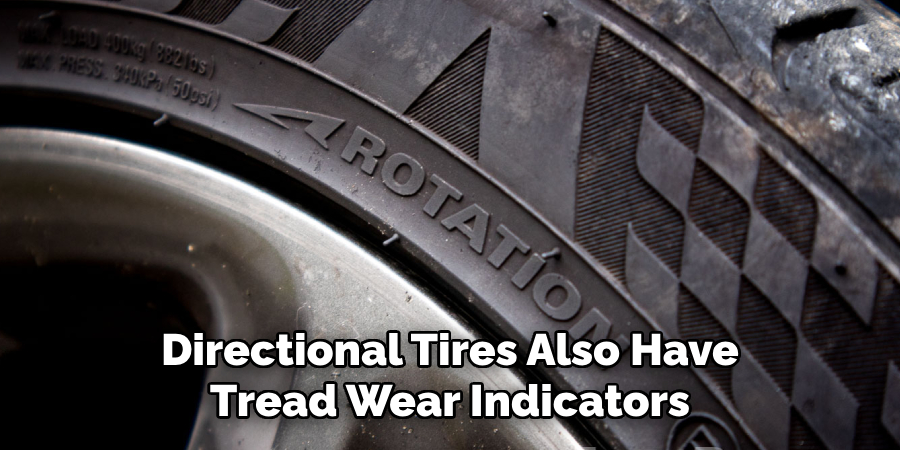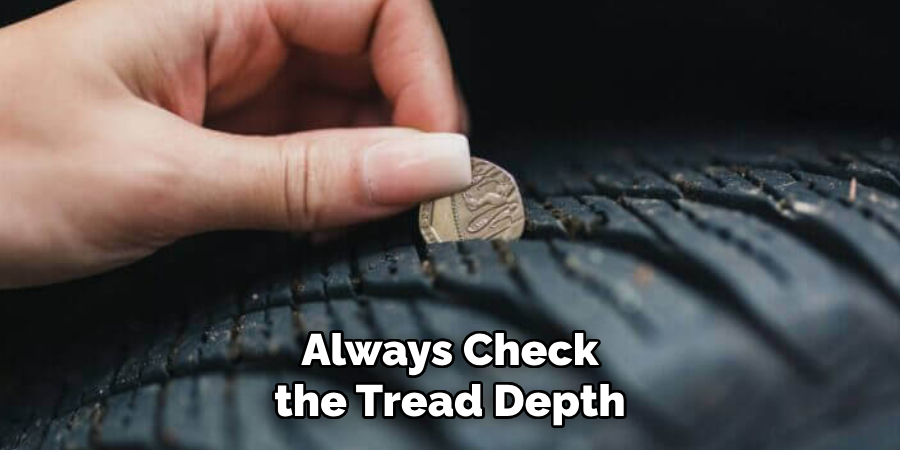Directional tires are a specific type of tire designed to enhance the performance and safety of your vehicle. They have a unique tread pattern that is designed to only rotate in one direction, providing improved traction and handling on wet or slippery roads. These tires are becoming increasingly popular among car owners for their various benefits, but many drivers may be unsure if they have directional tires on their vehicles.

In this blog post, we will discuss everything you need to know about directional tires and how to tell if you have directional tires. From understanding the purpose of directional tires to knowing how to identify them on your vehicle, we’ve got you covered with all the essential information you need to ensure proper maintenance and care for your car’s tires. So let’s dive in and learn more about this important aspect of safe driving!
9 Best Ways on How to Tell if You Have Directional Tires
1. Check the Sidewall of Your Tires:
The first and easiest way to tell if you have directional tires is by checking the sidewall of your tires. Directional tires will often have an arrow or other marking indicating the direction in which they should rotate, which can be found on the sidewall of the tire. This marking is usually located on the outer sidewall, near the tread pattern. If you see an arrow pointing in one direction, then you have directional tires.
2. Look for the Tread Pattern:
Another way to tell if you have directional tires is by looking at the tread pattern. Directional tires have a distinct and noticeable V-shaped pattern that only allows for forward rotation. This design helps to push water away from the tire’s surface, providing better traction and grip on wet roads. If you see this type of tread pattern on your tires, then you have directional tires.
3. Check for Tread Wear Indicators:
Directional tires also have tread wear indicators, which are small bars within the grooves of the tire’s tread. These indicators will appear as flat rubber bars between the treads when it’s time for the tires to be replaced. They are usually positioned in a diagonal pattern and can help you identify if your tires are directional or not.

4. Inspect the Directional Arrows:
If you find an arrow on your tire’s sidewall, take a closer look to see if there is another arrow pointing in the opposite direction.
This will confirm that you have directional tires since they must be rotated in the same direction as indicated by the arrows on both sides of the tire. If there is no arrow on the sidewall or if they are pointing in different directions, then you have non-directional tires. This is important to know when rotating your tires for proper maintenance.
5. Read the Owner’s Manual:
Your vehicle’s owner manual is a great resource for understanding the type of tires you have on your car. It will provide details about the recommended tire specifications and any special considerations regarding directional tires.

You can also find information about how often they need to be rotated, which can vary depending on the make and model of your vehicle. Make sure to consult your owner’s manual for accurate information about your specific car and tires.
6. Observe the Treads for Crisscross Patterns:
Another way to identify directional tires is by examining the trends closely. Directional tires will often have crisscross patterns within the tread blocks that only allow for forward rotation. These patterns help to enhance traction and handling on wet or slippery roads. If you see this type of pattern, then you have directional tires.
7. Pay Attention to the Tread Grooves:
Apart from the tread pattern, directional tires also have unique tread grooves that are designed to push water away from the tire’s surface. These grooves are often deep and wide, allowing for better water dispersion and providing improved traction on wet roads.
If your tires have similar deep and wide grooves, then you most likely have directional tires. This is also an important feature to look out for when checking your tires’ alignment and balance.
8. Check the Tire Brand:
Some tire brands specialize in directional tires, so if you remember the brand of your tires, you can do a quick search online to see if they offer directional options. This will help you determine if you have directional tires on your vehicle or not. However, keep in mind that not all tires from a specific brand may be directional, so it’s always best to double-check other factors as well.
9. Consult a Professional:
If you are still unsure if you have directional tires or if you need more information about your vehicle’s tire specifications, it’s always best to consult a professional mechanic or visit a tire shop.

They will be able to provide accurate and specific information about your tires and can also assist you with any tire-related concerns or questions you may have. Make sure to bring your owner’s manual and any other details about your vehicle to get the most accurate advice.
Following these tips will help you determine if you have directional tires on your vehicle and understand the benefits and considerations that come with them. Remember to always check your tires regularly for proper maintenance and safe driving.
In case you do have directional tires, make sure to rotate them according to the manufacturer’s recommendations to ensure optimal performance and longevity. Stay safe on the roads! Happy driving!
Additional Tips and Tricks to Tell if You Have Directional Tires
1. If you still have your vehicle’s original tires, check the owner’s manual to see if it mentions directional tires. This information can also be found on the tire placard located inside the driver’s door jam.
2. Directional tires should always be mounted with the arrows pointing toward the front of the vehicle. If they are mounted incorrectly, it can affect their performance and safety. Make sure to always have a professional mount and balance your tires.
3. Some directional tires may have an “inside” and “outside” marking on the sidewall, indicating which side of the tire should face outward. This is also important to note when mounting your tires.
4. Directional tires are not recommended for use in snowy or icy conditions as their tread pattern does not provide enough grip on such surfaces. Make sure to switch to specialized winter tires during the colder months for better traction and safety.
5. If you are planning to replace your directional tires, make sure to replace all four at the same time. Mixing directional and non-directional tires can affect the overall performance of your vehicle and may cause handling issues.
6. Directional tires may be slightly more expensive than non-directional tires due to their specialized design and performance capabilities. However, the added benefits of improved handling and traction may be worth the investment for some drivers. Make sure to do your research and choose the best tires for your specific vehicle and needs.
7. Always check the tread depth of your directional tires regularly to ensure they are still safe to drive on. Once the tread depth reaches 2/32 of an inch or less, it’s time to replace them for optimal performance and safety.

8. If you notice any unusual wear patterns on your directional tires, it could be a sign of improper inflation, alignment issues, or other mechanical problems with your vehicle. Make sure to have these issues addressed by a professional to prevent further damage and ensure safe driving.
Following these additional tips and tricks will not only help you determine if you have directional tires but also provide further information to properly maintain and care for them. Understanding the type of tires on your vehicle is crucial for safe driving and getting the most out of your tires’ performance. Always consult with a professional if you have any doubts or concerns about your tires to ensure optimal safety on the roads. Happy driving!
Frequently Asked Questions
Can I Switch From Directional Tires to Non-directional Tires or Vice Versa?
Yes, you can switch between the two types of tires. However, it’s best to have professional help with the transition and make sure all four tires are the same type for optimal performance and safety. Keep in mind that directional tires can only be rotated front to back and not side to side.
How Often Should I Rotate My Directional Tires?
It’s recommended to rotate your directional tires every 6,000-8,000 miles. However, always refer to the manufacturer’s recommendations for your specific tires for the most accurate information.
Can I Use Directional Tires in All Seasons?
While directional tires can provide improved traction on wet roads, they are not recommended for use in snowy or icy conditions. It’s best to switch to specialized winter tires during the colder months for better grip and safety.
Do Directional Tires Wear Out Faster Than Non-directional Tires?
No, directional tires do not wear out faster than non-directional tires. Both types of tires should be rotated and replaced regularly to ensure optimal performance and safety.
Can I Replace Only Two Directional Tires Instead of All Four?
It’s recommended to replace all four directional tires at the same time for better traction, handling, and overall performance. However, in some cases, if the remaining two tires have enough tread depth and are in good condition, they can be used with the new tires. Always consult with a professional for their recommendation.
Conclusion
Knowing how to tell if you have directional tires can help you understand the specific features and benefits of these tires and how to properly maintain them for optimal performance. Make sure to regularly check your tires, consult with a professional for accurate advice, and follow recommended maintenance guidelines. Stay safe on the roads and happy driving!
